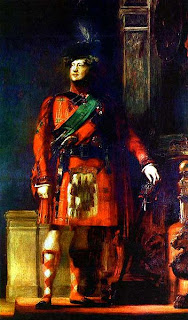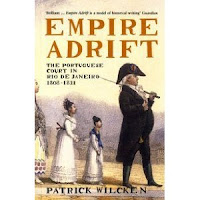A while back, I picked up Kisses on Paper at a library book sale. It’s a collection of love letters by women, edited by Jill Dawson, and contains a number of letters from our period. They certainly bust any stereotype that ladies of the period were meek, demure and lacking in sex drive.
 Jane Clairmont, also known as Claire Clairmont, spent a summer with the Shelleys and Byron and conceived a strong passion for Byron. Here she writes to him to arrange and overnight tryst and awaits nearby for his answer.
Jane Clairmont, also known as Claire Clairmont, spent a summer with the Shelleys and Byron and conceived a strong passion for Byron. Here she writes to him to arrange and overnight tryst and awaits nearby for his answer.
“Have you then any objection to the following plan? On Thursday Evening we may go out of town together by some stage or mail about the distance of ten or twelve miles. There we shall be free and unknown; we can return early the following morning. I have arranged every thing here so that the slightest suspicion may not be excited. Pray do so with your people.”
“Will you admit me for two moments to settle with you where? Indeed I will not stay an instant after you tell me to go. Only so much may be said and done in a short time by an interview which writing cannot effect. Do what you will, or go where you will, refuse to see me and behave unkindly, I shall never forget you. I shall ever remember the gentleness of your manners and the wild originality of your countenance. Having been once seen, you are not to be forgotten.”
 Mary Wollstonecraft, a pioneer in women’s rights, engages in an affair with Gilbert Imlay, with whom she had a daughter, Fanny. A few romance novels have mentioned her (usually as an inspiration for the heroine) but I wonder how many romance readers know about this original and passionate woman.
Mary Wollstonecraft, a pioneer in women’s rights, engages in an affair with Gilbert Imlay, with whom she had a daughter, Fanny. A few romance novels have mentioned her (usually as an inspiration for the heroine) but I wonder how many romance readers know about this original and passionate woman.
“You can scarcely imagine with what pleasure I anticipate the day, when we are to begin almost to live together; and you would smile to hear how many plans of employment I have in my head, now that I am confident my heart has found peace in your bosom. Cherish me with that dignified tenderness, which I have only found in you; and your own dear girl will try to keep under a quickness of feeling, which has sometimes given you pain. Yes, I will be good, that I may deserve to be happy; and whilst you love me, I cannot again fall into the miserable state which rendered life a burthen almost too heavy to be borne.”
“But, good night! God bless you! Sterne says that is equal to a kiss—yet I would rather give you the kiss into the bargain, glowing with gratitude to Heaven, and affection to you. I like the word affection, because it signifies something habitual; and we are soon to meet, to try whether we have mind enough to keep our hearts warm. I will be at the barrier a little after ten o’clock tomorrow.”
Some of these letter writers showed their strength in more conventional ways, by asserting their rights within their relationships.
 For financial reasons, Maria Bicknell and the painter John Constable had to wait five years to marry. Although she apologizes for the advice she gives him, I suspect the apology is more a matter of form.
For financial reasons, Maria Bicknell and the painter John Constable had to wait five years to marry. Although she apologizes for the advice she gives him, I suspect the apology is more a matter of form.
“Believe me, I shall feel a more lasting pleasure in knowing that you are improving your time, than I should do while you were on a stolen march with me round the Park. Still I am not heroine enough to say, wish, or mean that we should never meet. I know that to be impossible. But then, let us resolve it shall be but seldom; not as inclination, but as prudence shall dictate. Farewell, dearest John—may every blessing attend you, and in the interest I feel in your welfare, forgive the advice I have given you, who, I am sure are better qualified to admonish me. Resolution is, I think, what we now stand most in need of, to refrain for a time, for our mutual good, from the society of each other.”
Here Charlotte Carpenter writes to Sir Walter Scott, early in their relationship:
“Before I conclude this famous epistle, I will give you a little hint—that is, not to put so many musts into your letters—it is beginning rather too soon; and another thing is, that I take the liberty not to mind them much, but I expect you [to?] mind me.”
 And here is an excerpt from a sweet letter from Mary Wordsworth to William, delicately alluding to their first night together.
And here is an excerpt from a sweet letter from Mary Wordsworth to William, delicately alluding to their first night together.
“Dearest William! I am sorry about thy eye—that it is not well before now, & I am sorry for what causes in me such pious & exulting gladness—that you cannot fully enjoy your absence from me—indeed William I feel, I have felt that you cannot, but it overpowers me to be told it by your own pen I was much moved by the lines written with your hand in one of D’s letters where you spoke of coming home thinking you ‘would be of great use’ to me—indeed my love thou wouldst but I did not want thee so much then, as I do now that our uncomfortableness is passed away—if you had been here, no doubt there would have existed in me that underconsciousness that I had my all in all about me—that feeling which I have never wanted since the solitary night did not separate us, except in absence…”
I rather love this picture of the two of them!
Who are some of your favorite women of the Regency? Any favorite couples who might (or might not) be inspiration for romance?
Elena
www.elenagreene.com
www.facebook.com/ElenaGreene










